-

Jan
09
Interpretive Summary: Effect of second iron injection on growth performance, hematological parameters, and fecal microbiome of piglets fed different dietary iron levels
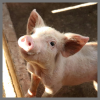
The study evaluated the effects of a second iron injection given to suckling pigs at 7 to 8 d of age after receiving an initial injection at 2 to 3 d of age and fed diets containing different dietary iron levels in the nursery period on growth, hematological characteristics, serum and liver trace minerals, and fecal microbiome.
Read more
-

Jan
09
Interpretive Summary: Graded supplemental choline chloride fed throughout the grow and finish periods elicited minimal influence on growth performance and carcass characteristics of pigs in a commercial setting
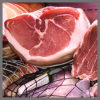
Supplemental choline has been shown to exert positive effects on growth performance and carcass characteristics in mammalian and avian species. However, limited research has focused on choline supplementation during the grow-finish period of pigs managed in a commercial context.
Read more
-

Jan
09
Interpretive Summary: Development of an indigestible dietary protein index to investigate the effects of dietary protein content in postweaned pigs
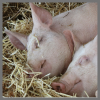
Increased dietary protein (DP) may predispose weanling pigs to health risks and reduced performance due to the negative effects on intestinal health and increased pathogen proliferation. However, since the negative impacts of DP are mostly due to the amount of protein flow into the hindgut, dietary indigestible dietary protein (IDP) content may better explain the potential effects of proteolytic fermentation on nursery pigs compared to DP.
Read more
-

Jan
09
Interpretive Summary: Impact of different feed intake levels on intestinal morphology and epithelial cell differentiation in piglets
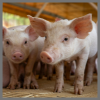
After weaning, the nutrient intake of piglets decreases significantly in the first few days due to changes in environment and diet. During periods of dietary decline, which results in villous atrophy, crypt hyperplasia, and expression of proinflammatory cytokines, piglets must adjust intestinal proliferation and differentiation to adapt to weaning stress.
Read more
-

Jan
06
Jim Lauderdale's ASAS Journey -"More 'moo' than math"

Jim Lauderdale's ASAS Journey
Read more
-

Jan
02
Interpretive Summary: Replacing sulfate with hydroxychloride sources of trace minerals modulated the growth performance and plasma indicators of inflammation and energy metabolism in beef heifers during periods of feed restriction...
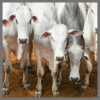
This study investigated how 2 sources (sulfate vs. hydroxychloride) of copper, manganese, and zinc affect the growth and plasma indicators of inflammation and energy metabolism of Bos indicus beef heifers under various nutritional challenges. Nelore heifers were monitored through different periods of 28 d each...
Read more
-

Jan
02
Interpretive Summary: Effects of increasing supplemental zinc to non-implanted and implanted finishing steers
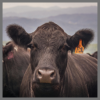
This 59-d study explored the effects of zinc supplementation and an anabolic implant on the performance and carcass quality of Angus-crossbred steers. Researchers provided different levels of zinc to the steers, some of which received a combination growth implant.
Read more
-

Jan
02
Interpretive Summary: Genetic evaluation of productive longevity in a multibreed beef cattle population
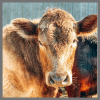
Productive longevity (PL) is a concept that blends cow longevity with reproductive performance quantified by the number of calves regularly produced over the defined lifespan. Specifically, PL was defined as the number of calves consecutively and regularly produced from the second to the eighth parity at 9 yr of age, assuming the first calf was produced at roughly 2 yr of age.
Read more
-

Jan
02
Interpretive Summary: Restricted feeding of weight control diets induces weight loss and affects body composition, voluntary physical activity, blood metabolites, hormones, and oxidative stress markers, and fecal metabolites and microbiota of obese cats

The objective of this study was to determine the effects of restricting the intake of weight control diets on weight loss, body composition, voluntary physical activity, serum markers of metabolism and inflammation, and fecal metabolites and microbiota of obese cats.
Read more
-

Jan
02
Interpretive Summary: Cannabidiol can affect morphology, morphometry, enzymatic and microbial activity of rabbit digestive system

The study compares the characteristics of the small and large intestines in 2 groups of healthy meat rabbit feeding or not with a cannabidiol extract for 27 d. Feed intake and final weight are similar for both groups. However, cannabidiol significantly interfered with protein digestion in the small intestine and decreased the microbial activity in the cecum.
Read more
-

Jan
02
Interpretive Summary: Etiology, persistence, and risk factors of subclinical mastitis in a meat-producing sheep flock

Subclinical mastitis is the inflammation of the udder without visible signs. It is typically caused by bacterial infection. This disease can have important economic and welfare impacts on meat-producing flocks, including udder damage, decreased milk yield, impaired lamb growth, and increased ewe and lamb mortality.
Read more
-

Jan
02
Interpretive Summary: Dog sniffing biomechanic responses in an odor detection test of odorants with differing physical properties

Dogs are utilized in forensic science for their extensive scent-detection capabilities. They are often considered the “gold standard” in-field detection for targets such as illicit drugs and explosives. Despite their prevalence in the field, relatively little is known about how dogs interact with and transport volatile organic compounds through their olfactory system.
Read more
-

Dec
27
Thank you for making our work a reality
Read more
-

Dec
23
Thank you for making our work a reality!
Read more
-

Dec
19
Washington Roundup – December 2024

Decembers edition of Washington Roundup includes three overviews: Outlook for Continuing Resolution and Farm Bill Extension Unclear, USDA and FDA Release Dietary Guidelines Committee Report, and FDA and APHIS Release Charter on Animal Biologicals Jurisdiction
Read more
-

Dec
19
2025 Dietary Guidelines Advisory Committee Report Open for Public Comment
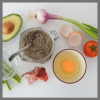
The Scientific Report of the 2025 Dietary Guidelines Advisory Committee (Scientific Report) was submitted to the Secretaries of the U.S. Department of Health and Human Services (HHS) and the U.S. Department of Agriculture (USDA) and is available online. The departments have opened a 60-day comment period to collect input from the public on the Scientific Report (December 11, 2024 – February 10, 2025).
Read more
-

Dec
19
OSTP’s STEM Five-Year Plan - A Blueprint for Advancing STEM Education and Talent

As we all know, Animal Sciences is a multifaceted STEM field that studies animal biology and management to improve the lives of both animals and humans. It applies principles from the biological, physical, and social sciences to problems in livestock production and management.
Read more
-

Dec
18
The Giving Herd - ASAS Foundation Newsletter - December 2024

The December Edition of The Giving Herd, an ASAS Foundation Newsletter
Read more
-

Dec
12
Interpretive Summary: Soybean isoflavone promotes milk yield and milk fat yield through the ERα-mediated Akt/mTOR pathway in dairy goats

This study aimed to assess the impact of soybean isoflavone (SIF) on milk production and composition in dairy goats. In vivo experiments revealed that SIF supplementation (100 mg/d) significantly raised serum estrogen and prolactin levels, resulting in increased milk yield and fat content compared to the control group.
Read more
-

Dec
12
Interpretive Summary: D-aspartate stimulates growth hormone secretion in wethers
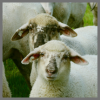
Growth hormone (GH), secreted by the anterior pituitary gland, is crucial in the regulation of ruminant growth and development, milk production, and energy metabolism in ruminants. Controlling GH secretion is, therefore, an essential factor in enhancing productivity.
Read more
 JanInterpretive Summary: Effect of second iron injection on growth performance, hematological parameters, and fecal microbiome of piglets fed different dietary iron levels
JanInterpretive Summary: Effect of second iron injection on growth performance, hematological parameters, and fecal microbiome of piglets fed different dietary iron levels The study evaluated the effects of a second iron injection given to suckling pigs at 7 to 8 d of age after receiving an initial injection at 2 to 3 d of age and fed diets containing different dietary iron levels in the nursery period on growth, hematological characteristics, serum and liver trace minerals, and fecal microbiome.
The study evaluated the effects of a second iron injection given to suckling pigs at 7 to 8 d of age after receiving an initial injection at 2 to 3 d of age and fed diets containing different dietary iron levels in the nursery period on growth, hematological characteristics, serum and liver trace minerals, and fecal microbiome. JanInterpretive Summary: Graded supplemental choline chloride fed throughout the grow and finish periods elicited minimal influence on growth performance and carcass characteristics of pigs in a commercial setting
JanInterpretive Summary: Graded supplemental choline chloride fed throughout the grow and finish periods elicited minimal influence on growth performance and carcass characteristics of pigs in a commercial setting Supplemental choline has been shown to exert positive effects on growth performance and carcass characteristics in mammalian and avian species. However, limited research has focused on choline supplementation during the grow-finish period of pigs managed in a commercial context.
Supplemental choline has been shown to exert positive effects on growth performance and carcass characteristics in mammalian and avian species. However, limited research has focused on choline supplementation during the grow-finish period of pigs managed in a commercial context. JanInterpretive Summary: Development of an indigestible dietary protein index to investigate the effects of dietary protein content in postweaned pigs
JanInterpretive Summary: Development of an indigestible dietary protein index to investigate the effects of dietary protein content in postweaned pigs Increased dietary protein (DP) may predispose weanling pigs to health risks and reduced performance due to the negative effects on intestinal health and increased pathogen proliferation. However, since the negative impacts of DP are mostly due to the amount of protein flow into the hindgut, dietary indigestible dietary protein (IDP) content may better explain the potential effects of proteolytic fermentation on nursery pigs compared to DP.
Increased dietary protein (DP) may predispose weanling pigs to health risks and reduced performance due to the negative effects on intestinal health and increased pathogen proliferation. However, since the negative impacts of DP are mostly due to the amount of protein flow into the hindgut, dietary indigestible dietary protein (IDP) content may better explain the potential effects of proteolytic fermentation on nursery pigs compared to DP. JanInterpretive Summary: Impact of different feed intake levels on intestinal morphology and epithelial cell differentiation in piglets
JanInterpretive Summary: Impact of different feed intake levels on intestinal morphology and epithelial cell differentiation in piglets After weaning, the nutrient intake of piglets decreases significantly in the first few days due to changes in environment and diet. During periods of dietary decline, which results in villous atrophy, crypt hyperplasia, and expression of proinflammatory cytokines, piglets must adjust intestinal proliferation and differentiation to adapt to weaning stress.
After weaning, the nutrient intake of piglets decreases significantly in the first few days due to changes in environment and diet. During periods of dietary decline, which results in villous atrophy, crypt hyperplasia, and expression of proinflammatory cytokines, piglets must adjust intestinal proliferation and differentiation to adapt to weaning stress. JanJim Lauderdale's ASAS Journey -"More 'moo' than math"
JanJim Lauderdale's ASAS Journey -"More 'moo' than math" Jim Lauderdale's ASAS Journey
Jim Lauderdale's ASAS Journey JanInterpretive Summary: Replacing sulfate with hydroxychloride sources of trace minerals modulated the growth performance and plasma indicators of inflammation and energy metabolism in beef heifers during periods of feed restriction...
JanInterpretive Summary: Replacing sulfate with hydroxychloride sources of trace minerals modulated the growth performance and plasma indicators of inflammation and energy metabolism in beef heifers during periods of feed restriction... This study investigated how 2 sources (sulfate vs. hydroxychloride) of copper, manganese, and zinc affect the growth and plasma indicators of inflammation and energy metabolism of Bos indicus beef heifers under various nutritional challenges. Nelore heifers were monitored through different periods of 28 d each...
This study investigated how 2 sources (sulfate vs. hydroxychloride) of copper, manganese, and zinc affect the growth and plasma indicators of inflammation and energy metabolism of Bos indicus beef heifers under various nutritional challenges. Nelore heifers were monitored through different periods of 28 d each... JanInterpretive Summary: Effects of increasing supplemental zinc to non-implanted and implanted finishing steers
JanInterpretive Summary: Effects of increasing supplemental zinc to non-implanted and implanted finishing steers This 59-d study explored the effects of zinc supplementation and an anabolic implant on the performance and carcass quality of Angus-crossbred steers. Researchers provided different levels of zinc to the steers, some of which received a combination growth implant.
This 59-d study explored the effects of zinc supplementation and an anabolic implant on the performance and carcass quality of Angus-crossbred steers. Researchers provided different levels of zinc to the steers, some of which received a combination growth implant. JanInterpretive Summary: Genetic evaluation of productive longevity in a multibreed beef cattle population
JanInterpretive Summary: Genetic evaluation of productive longevity in a multibreed beef cattle population Productive longevity (PL) is a concept that blends cow longevity with reproductive performance quantified by the number of calves regularly produced over the defined lifespan. Specifically, PL was defined as the number of calves consecutively and regularly produced from the second to the eighth parity at 9 yr of age, assuming the first calf was produced at roughly 2 yr of age.
Productive longevity (PL) is a concept that blends cow longevity with reproductive performance quantified by the number of calves regularly produced over the defined lifespan. Specifically, PL was defined as the number of calves consecutively and regularly produced from the second to the eighth parity at 9 yr of age, assuming the first calf was produced at roughly 2 yr of age. JanInterpretive Summary: Restricted feeding of weight control diets induces weight loss and affects body composition, voluntary physical activity, blood metabolites, hormones, and oxidative stress markers, and fecal metabolites and microbiota of obese cats
JanInterpretive Summary: Restricted feeding of weight control diets induces weight loss and affects body composition, voluntary physical activity, blood metabolites, hormones, and oxidative stress markers, and fecal metabolites and microbiota of obese cats The objective of this study was to determine the effects of restricting the intake of weight control diets on weight loss, body composition, voluntary physical activity, serum markers of metabolism and inflammation, and fecal metabolites and microbiota of obese cats.
The objective of this study was to determine the effects of restricting the intake of weight control diets on weight loss, body composition, voluntary physical activity, serum markers of metabolism and inflammation, and fecal metabolites and microbiota of obese cats. JanInterpretive Summary: Cannabidiol can affect morphology, morphometry, enzymatic and microbial activity of rabbit digestive system
JanInterpretive Summary: Cannabidiol can affect morphology, morphometry, enzymatic and microbial activity of rabbit digestive system The study compares the characteristics of the small and large intestines in 2 groups of healthy meat rabbit feeding or not with a cannabidiol extract for 27 d. Feed intake and final weight are similar for both groups. However, cannabidiol significantly interfered with protein digestion in the small intestine and decreased the microbial activity in the cecum.
The study compares the characteristics of the small and large intestines in 2 groups of healthy meat rabbit feeding or not with a cannabidiol extract for 27 d. Feed intake and final weight are similar for both groups. However, cannabidiol significantly interfered with protein digestion in the small intestine and decreased the microbial activity in the cecum. JanInterpretive Summary: Etiology, persistence, and risk factors of subclinical mastitis in a meat-producing sheep flock
JanInterpretive Summary: Etiology, persistence, and risk factors of subclinical mastitis in a meat-producing sheep flock Subclinical mastitis is the inflammation of the udder without visible signs. It is typically caused by bacterial infection. This disease can have important economic and welfare impacts on meat-producing flocks, including udder damage, decreased milk yield, impaired lamb growth, and increased ewe and lamb mortality.
Subclinical mastitis is the inflammation of the udder without visible signs. It is typically caused by bacterial infection. This disease can have important economic and welfare impacts on meat-producing flocks, including udder damage, decreased milk yield, impaired lamb growth, and increased ewe and lamb mortality. JanInterpretive Summary: Dog sniffing biomechanic responses in an odor detection test of odorants with differing physical properties
JanInterpretive Summary: Dog sniffing biomechanic responses in an odor detection test of odorants with differing physical properties Dogs are utilized in forensic science for their extensive scent-detection capabilities. They are often considered the “gold standard” in-field detection for targets such as illicit drugs and explosives. Despite their prevalence in the field, relatively little is known about how dogs interact with and transport volatile organic compounds through their olfactory system.
Dogs are utilized in forensic science for their extensive scent-detection capabilities. They are often considered the “gold standard” in-field detection for targets such as illicit drugs and explosives. Despite their prevalence in the field, relatively little is known about how dogs interact with and transport volatile organic compounds through their olfactory system. DecThank you for making our work a reality
DecThank you for making our work a reality DecThank you for making our work a reality!
DecThank you for making our work a reality! DecWashington Roundup – December 2024
DecWashington Roundup – December 2024 Decembers edition of Washington Roundup includes three overviews: Outlook for Continuing Resolution and Farm Bill Extension Unclear, USDA and FDA Release Dietary Guidelines Committee Report, and FDA and APHIS Release Charter on Animal Biologicals Jurisdiction
Decembers edition of Washington Roundup includes three overviews: Outlook for Continuing Resolution and Farm Bill Extension Unclear, USDA and FDA Release Dietary Guidelines Committee Report, and FDA and APHIS Release Charter on Animal Biologicals Jurisdiction Dec2025 Dietary Guidelines Advisory Committee Report Open for Public Comment
Dec2025 Dietary Guidelines Advisory Committee Report Open for Public Comment The Scientific Report of the 2025 Dietary Guidelines Advisory Committee (Scientific Report) was submitted to the Secretaries of the U.S. Department of Health and Human Services (HHS) and the U.S. Department of Agriculture (USDA) and is available online. The departments have opened a 60-day comment period to collect input from the public on the Scientific Report (December 11, 2024 – February 10, 2025).
The Scientific Report of the 2025 Dietary Guidelines Advisory Committee (Scientific Report) was submitted to the Secretaries of the U.S. Department of Health and Human Services (HHS) and the U.S. Department of Agriculture (USDA) and is available online. The departments have opened a 60-day comment period to collect input from the public on the Scientific Report (December 11, 2024 – February 10, 2025). DecOSTP’s STEM Five-Year Plan - A Blueprint for Advancing STEM Education and Talent
DecOSTP’s STEM Five-Year Plan - A Blueprint for Advancing STEM Education and Talent As we all know, Animal Sciences is a multifaceted STEM field that studies animal biology and management to improve the lives of both animals and humans. It applies principles from the biological, physical, and social sciences to problems in livestock production and management.
As we all know, Animal Sciences is a multifaceted STEM field that studies animal biology and management to improve the lives of both animals and humans. It applies principles from the biological, physical, and social sciences to problems in livestock production and management. DecThe Giving Herd - ASAS Foundation Newsletter - December 2024
DecThe Giving Herd - ASAS Foundation Newsletter - December 2024 The December Edition of The Giving Herd, an ASAS Foundation Newsletter
The December Edition of The Giving Herd, an ASAS Foundation Newsletter DecInterpretive Summary: Soybean isoflavone promotes milk yield and milk fat yield through the ERα-mediated Akt/mTOR pathway in dairy goats
DecInterpretive Summary: Soybean isoflavone promotes milk yield and milk fat yield through the ERα-mediated Akt/mTOR pathway in dairy goats This study aimed to assess the impact of soybean isoflavone (SIF) on milk production and composition in dairy goats. In vivo experiments revealed that SIF supplementation (100 mg/d) significantly raised serum estrogen and prolactin levels, resulting in increased milk yield and fat content compared to the control group.
This study aimed to assess the impact of soybean isoflavone (SIF) on milk production and composition in dairy goats. In vivo experiments revealed that SIF supplementation (100 mg/d) significantly raised serum estrogen and prolactin levels, resulting in increased milk yield and fat content compared to the control group. DecInterpretive Summary: D-aspartate stimulates growth hormone secretion in wethers
DecInterpretive Summary: D-aspartate stimulates growth hormone secretion in wethers Growth hormone (GH), secreted by the anterior pituitary gland, is crucial in the regulation of ruminant growth and development, milk production, and energy metabolism in ruminants. Controlling GH secretion is, therefore, an essential factor in enhancing productivity.
Growth hormone (GH), secreted by the anterior pituitary gland, is crucial in the regulation of ruminant growth and development, milk production, and energy metabolism in ruminants. Controlling GH secretion is, therefore, an essential factor in enhancing productivity.



